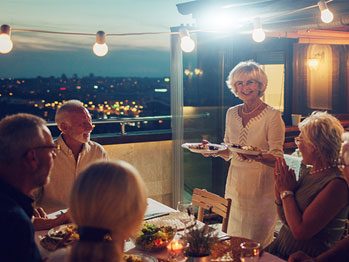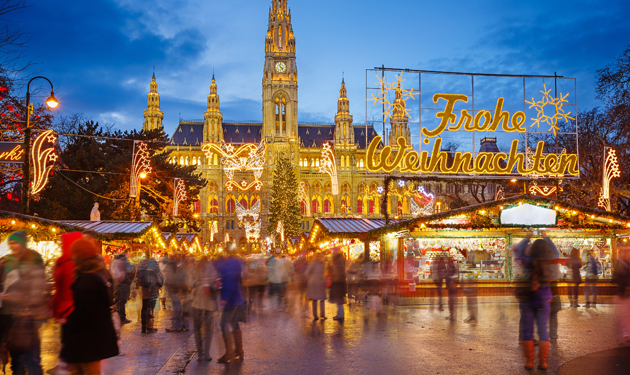
While Christmas in Australia is usually celebrated with seafood, beaches and surfing Santas, each country chooses to commemorate this special time of year differently. Here we look at some of the more unusual ways your migrant neighbours, friends or loved ones may choose to enjoy this special time of the year.
Yuletide traditions vary from country to country and sometimes even generation to generation. But what is almost universal is the way families choose this period to come together to ensure their children get the chance to share in the magic of Christmas. Originally a Christian festival held to commemorative the birth of Jesus, today people around the world choose to mark the season in their own unique ways.
China
The small number of Christians in China refer to Christmas as Sheng Dan Jieh, which means Holy Birth Festival. Residents here like to decorate their homes with evergreens, posters, and bright paper chains. The family puts up a Christmas tree, called “tree of light,” and decorates it with colourful lanterns, flowers, and red paper chains that symbolise happiness. They cut out red pagodas to paste on the windows, and light their houses with paper lanterns. On Christmas Eve, children who celebrate Christmas hang up their muslin stockings that are specially made so Dun Che Lao Ren, or “Christmas Old Man,” can fill them with gifts. While not part of Christmas, the Chinese Lunar New Year is considered the most important celebration of the year. People travel long distances to be with their families. Many people exchange gifts at the New Year with tradition determining that expensive, special presents are given only to close family members. Token gifts are given to friends and distant relations. Children are usually given gifts of new shoes and hats.
India
Christianity is only the third most popular religion in India (behind Hinduism and Islam) so compared to other religious festivals, Christmas is quite small here. As with many other countries, midnight mass is a very important service for Christians in India who will all attend mass before indulging in a massive feast of different delicacies and exchanging presents. Traditionally those who live here don’t decorate a Christmas tree: instead they decorate banana or mango trees and will often place clay lamps on the roof of their house to celebrate the birth of Jesus.
Germany
While Father Christmas has his place, ‘der Nikolaus’ travels by donkey in the middle of the night on December 6 (Nikolaus Tag) and leaves little treats like coins, chocolate, oranges and toys in the shoes of good children all over Germany, particularly in the Bavarian region.
St. Nicholas also visits children in schools or at home and in exchange for sweets or a small present each child must recite a poem, sing a song or draw a picture. Elsewhere at small work places and school parties, secret presents are often exchanged, similar to Kris Kringle. The difference here is that a door is opened just wide enough for small presents to be thrown into the room. The presents are then passed around until each person has the correct present. It is believed to be bad luck to find out the identity of your gift giver.
Iceland
In the 13 days leading up to Christmas, 13 playful imp-like characters, referred to as “Yule lads” (or jólasveinarnir or jólasveinar in Icelandic) visit children across the country. For each night of Yuletide, children place their best shoes by the window and a different Yule Lad, clad in traditional Icelandic costume, visits leaving gifts for nice girls and boys and rotting potatoes for the naughty ones. Elsewhere in Iceland it is custom hat everybody has a new piece of clothing and a book for Jól (which also encompasses the New Year). Children also traditionally receive a candle and sometimes a pack of cards during this period.
Catalan, Spain
In many parts of Spain Christmas festivities centre on a tradition known as Tió de Nadal. Roughly translated to Christmas Log, the Tió de Nadal was just a piece of dead wood, but in recent generations the log has been given a face with an attached nose and two little legs, along with a little red hat. Tradition states that on the Day of the Immaculate Conception, December 8, households begin to “feed” the log every night with the log given a small blanket to keep it warm during the chilly weeks before Christmas.
On Christmas Eve the log is placed in the fireplace. Members of the house then take turns bashing it with a stick and commanding it to defecate out presents, candies and wafers. The bashing continues while traditional songs about the log are sung. Christmas is then celebrated as children reach below the tió’s blanket to pull out their “gifts” of defecated candy and presents. Elsewhere in Spain, most residents go to midnight mass on Christmas Eve. After the midnight service, one old tradition sees residents walk through the streets carrying torches, strumming on guitars, beating drums and chanting ‘Esta noche es Noche-Buena’ which loosely translates to ‘Tonight is the good night and it is not meant for sleeping’.
Ukraine
Christmas in Ukraine is celebrated on 7th January owing to the fact that like many countries where the main Church is the Orthodox Church, they use the old ‘Julian’ calendar for their church festivals. The main Christmas meal, called ‘Sviata Vecheria’ (or Holy Supper) is eaten on Christmas Eve (6th January). Traditionally people fast all day but may start the day drinking holy water that has been blessed at church. Tradition dictates that you are unable to start eating your meal until the first star is seen in the sky. So people (especially the hungry ones!) go outside as soon as it start getting dark in the afternoon to try and spot the first star. Christmas Trees are often decorated with artificial spider’s webs and finding a spider on web on your tree is meant be good luck. There are also little spider’s web decorations, made of paper and silver wire, called ‘pavuchky’ (which means ‘little spider’) which people hang on their trees.
Caracas, Venezuela
Every Christmas Eve, the city’s residents head to church in the early morning but for an unknown reason they do so on roller skates. Proving so popular that authorities now close roads across the city to cars so that people can skate to church in safety. Residents then head home to enjoy what they refer to as a traditional Christmas dinner of ‘tamales’ (a wrap made out of cornmeal dough and stuffed with meat, then steamed). In other parts of the country main presents are given at midnight on Christmas Eve, where they are brought by ‘San Nicolás’ (St. Nicholas) & ‘Niño Jesús’ (Baby Jesus). At one time it was also traditional for people to paint their houses two to four weeks before Christmas, so it was all nice and smart and ready to be decorated for Christmas. New clothes are also usually donned for Christmas and New Year’s Eve, with many people believing that if you wear yellow on New Year’s Eve you will have good luck the next year.











